|
Many of my fondest memories were created at a family meal around a table. Relaxed Sunday dinners when no one had to rush off for work or commitments, picnics at the park in the great outdoors, holiday meals with all the finery, birthday celebrations, and nightly dinners where we all paused amidst our busy schedules were the catalyst to so many good and wonderful things in my life. Whatever the occasion, the common thread was that our family intentionally gathered together, prayed, ate, and shared precious time with each other. It taught me the importance of being a family unit (both immediate and extended), and it revealed to me the richness of each person’s part in the building of a family as God intended it. The way we are linked together with our combined unique talents and personalities creates a beautiful and diverse whole unit. The stories shared, the laughter, the lessons learned are where I came to understand the “heart” of family. The communion of our rich and diverse individual lives seated at table together strengthens and nourishes us much more than the food we partake of. Our bodies and our spirits are nourished at these meals.
It is by no accident or random act that Jesus gathered His family and apostles around the table together. It was a calling together in a very basic physical manner—to nurture the body and the soul of each person there. The Communion Jesus instituted is the very essence by which He feeds us with what we need to carry out our mission as Christians, to share the Gospel message in our words and deeds. His Body, Blood, Soul, and Divinity is the complete sacrifice given to us each and every time we approach His table at Mass. The more we gather there, the more we are nourished with grace and wisdom, strength and virtue to equip us to enter the daily fray and to live the Christian life—to be bearers of God’s truth and love. Following His example, a family learns and grows from intentionally sharing meals at table together. All that is involved in this gathering teaches and molds us. The food preparation, the setting of the table, giving thanks in prayer, sharing the food, the conversation exchanged, and the cleaning up are simple acts in themselves, but done together creates a unity and rhythm that cultivates the value of each person in the unit. As a child, I was privileged to grow up in a home where family meals were an integral part of our daily routine. I was also raised to recognize the importance of attending Holy Mass together, and it was a special time of week for our family. The Rev. Fulton J. Sheen so eloquently said: “The greatest love story of all time is contained in a tiny white host.” This is how Jesus feeds us—yesterday, today, and tomorrow. He made the profoundly complete meal so simple for us. All we need to do is to gather at His table. With each year, I come to realize how paramount it is to gather at the altar, to be present at the table of our Lord, in communion with my brothers and sisters, and to receive the Eucharist together—our Bread of Life! Through this sharing with our Lord and Savior, our Creator and Redeemer, our love stories grow deep. From this fullness I am able to love and serve my husband and children more perfectly, treat my neighbor with care and compassion, forgive those who hurt me more easily, give more, and want less. All goodness and mercy, tenderness and courage come from the meal at the table of the Lord. It has become an essential part of each day for me, and the blessings abound from it. I am grateful for the freedom we have to be able to attend Mass daily and to receive the divine sustenance needed to live in this fractured world. Receiving Jesus—His Body, Blood, Soul, and Divinity—is the ultimate gift. It helps me to be a better person and the ripple effect going out to others is endless. God’s design is so perfect! I encourage each of you to reflect on your personal spiritual love story and invite you to join your community at the table of the Lord as often as possible to be strengthened in what is necessary to bring about goodness in our lives. This love of God can heal this broken and divided world, and it is accomplished by God dwelling in and working through us—one person loving another. And a great place to practice is around the family table! As Mother Teresa told us: “If you want to change the world, go home and love your family.”
0 Comments
Earlier this year, I had the profound experience of traveling to France, specifically the cities of Paris and Avignon. This was my first time in the country, and in my quest to find places of historic Catholic significance, I discovered St. Vincent de Paul’s tomb along with St. Catherine Laboure’s incorrupt body, both of which were located in Paris.
Figure 1: Bones of St. Vincent de Paul encased in a wax figure of the saint. His heart is incorrupt and housed in the chapel of the motherhouse of the Daughters of Charity in Paris. Photo by Dana Edwards Szigeti.
I had heard of these saints before, but I wanted to learn more about their lives. I knew the Society of St. Vincent de Paul was dedicated to serving the poor and that our family had made local donations to this organization. For a retreat, I had visited the seminary in Florida (my home state) which is named after St. Vincent, but I didn’t know the history behind the saint. Born into a poor French peasant family, St. Vincent was educated by Franciscans and entered the priesthood. Just five years after his ordination in 1600, St. Vincent was captured and sold as a slave in Tunis. During his imprisonment, he vowed to God that he would devote his life to serving the poor if he escaped. Two years later, he escaped and led a life of establishing hospitals for the poor, ministering to convicts, reforming the clergy during a time when there weren’t many priests in France, and instructing and preparing young men for the priesthood. “Go to the poor,” St. Vincent said. “You will find God.” In discovering more about this industrious saint, I was struck by how many more saints he formed and inspired. As St. Louise de Marillac’s spiritual guide, St. Vincent encouraged her to pursue charitable works. Together with St. Louise, St. Vincent de Paul founded the Daughters of Charity in 1633. Their religious institution was the first non-cloistered religious order of women devoted to active works of charity. St. Louise trained young women not only in the spiritual life but also in the corporal works of mercy.
Figure 2: Remains of St. Louise de Marillac encased in her wax figure at the chapel of the motherhouse of the Daughters of Charity in Paris. Photo by Dana Edwards Szigeti.
The order established soup kitchens, organized hospitals for the needy, set up schools and homes for orphans, offered job training, taught young children, and even sought to improve prison conditions. From the very beginning of the order’s founding, St. Louise dedicated it to the Blessed Mother. In 1830, Our Lady appeared to St. Catherine Laboure, a member of the Daughters of Charity, and entrusted her with developing the Miraculous Medal.
Figure 3: Incorrupt body of St. Catherine Laboure pictured to the bottom left; the blue chair on the right is the one in which the Blessed Mother appeared to St. Catherine. Photo by Dana Edwards Szigeti.
In 1833, St. Vincent de Paul admirer Blessed Frederic Ozanam founded the Society of St. Vincent de Paul in France. And during the nineteenth century, St. Elizabeth Ann Seton founded a community of sisters in the United States who then joined the Daughters of Charity in France, becoming the first community of the Daughters of Charity in America. As we celebrate St. Vincent de Paul’s feast day on September 27, let us consider how our actions inspire those around us like St. Vincent’s did for future saints to follow. Let us pray and listen to the Holy Spirit and see his movement in both our lives and the lives of others. How might the Holy Spirit be calling us to model the patron saint of charitable societies? How might we be called to encourage others around us to be saints? “Grace strengthens you in order to sanctify you and sanctifies you so that you might encourage others in the way of salvation.” – St. Vincent de Paul, III; 258
Figure 4: Eucharistic adoration in the chapel at the motherhouse of the Daughters of Charity. Photo by Dana Edwards Szigeti.
Resources:
Growing up as an Italian-American, I always knew about our culture’s special connection with Padre Pio, also known as Saint Pius of Pietrelcina. We always prayed to him, images of him were scattered around family members' houses, and I could feel his presence around us. Yet it was not until I grew older that I became interested in learning more about Padre Pio’s life and ministry, not just knowing him as someone to whom we prayed for his intercession.
In learning more about his story and road to sainthood, I was inspired by his perseverance through adversity. I began reflecting on his stigmata, the five wounds that were miraculously given to him by God as a way of sharing in the salvific suffering of Christ crucified, and the controversy that surrounded it as some even called him a fraud. Yet throughout these public outcries, he stood firm in his faith and allowed many investigations into his condition. It would have been so easy for him to shut the doors, draw the curtains, and live out the rest of his life behind closed doors. But not Padre Pio: he held Masses that lasted for hours, endured poking and prodding from medical professionals, and suffered immense pain and humiliation. In a letter, he writes about the suffering he faces and says: “Will he (the Lord) at least free me from the embarrassment caused by these outward signs? I will raise my voice and will not stop imploring him until in his mercy he takes away, not the wound or the pain, which is impossible since I wish to be inebriated with pain, but these outward signs which cause me such embarrassment and unbearable humiliation." Being put out of your comfort zone by someone else is something that I think most people would not enjoy—I know I certainly don’t—but for Padre Pio, he saw that it was God who was putting him out of his comfort zone in such an extreme way and allowing him to experience such immense pain for a greater purpose. St. Padre Pio was so incredible because he saw this suffering as coming from God and as a manifestation of God working through him to accomplish something great. I cannot imagine how difficult it must have been to be facing the realities of his stigmata and mystical experiences as well as dealing with the public’s reaction to the abilities he was given by the Lord. What a cross it would have been to bear! Yet Padre Pio continued on and was focused on helping bring about the healing of others—what a reminder to all of us to do the same. In the summer of 2016, my family and I took a trip to Italy, which is where my mother grew up. We were extremely fortunate to be only about a two-hour drive from The Shrine of Padre Pio in San Giovanni Rotondo. This is both a shrine and the church where Padre Pio lived, served, and died. When we decided to visit the shrine, I was unsure of what to expect. On our long car ride through the Italian countryside, I looked out the window, wondering what the day would turn out to be, but it ended up being one of the cornerstones of my faith formation. It truly was an amazing experience. We got to go on a tour of the shrine, pray in the same space that Padre Pio once did, and visit his tomb. It was such an immersive way of experiencing who Padre Pio was as a person, the steps he took every day, and a glimpse into his reality. The few hours that we were there felt like just mere minutes, and I found myself trying to soak in every last second that I could in the sacred space. From the gift shop, I got a small bracelet with a Tau cross in between a row of small colorful beads to commemorate that day. Out of all the wonderful souvenirs I got from my month in Italy, this simple bracelet may have been my favorite. I wore the bracelet every day throughout my freshman year of college, which began in the fall of 2016, and found myself using it as a prayer object during times of uncertainty. It helped me not only feel connected to Padre Pio and his intercession but also to feel connected to my culture and my family back home, as my freshman year was filled with feeling homesick. While I no longer wear the bracelet (it got misplaced somewhere in moving out of my dorm), I still feel connected to and interested in Padre Pio and his life and dedication to helping others. I am so grateful for his presence to me, to my family, and to my culture.
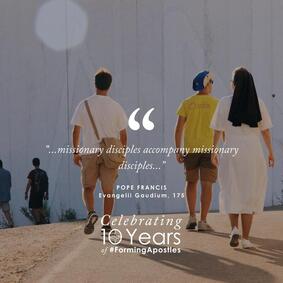
“Filled with the love of Christ, young people are called to be witnesses of the Gospel wherever they find themselves, by the way they live.” (Christus Vivit, 175)
Missionary discipleship is most fruitful through the witness of the baptized. Many are profoundly moved, particularly by the witness of young people. People often comment on who is not active in the life of faith. How often do we put our attention on those who are? These are the people, including many young people, who live their faith and go forth daily as missionary disciples of Christ. Pope Francis teaches that “missionary disciples accompany missionary disciples” (Evangelii Gaudium, 175). The baptized do not become missionary disciples on their own, they need accompaniment. This is true for young people and true for all. Young people do need accompaniment toward missionary discipleship, but that can only happen if others are well-formed disciples. Part of this formation includes learning more about ministry with young people, particularly young adults.The Center has an online course in this area that is described in an article below. Many young people evangelize others through their witness of faith in word and deed. Sometimes this is a story that is not told. They live well their faith through missionary discipleship and have brought others to Christ and his Church. They need our support, accompaniment, and prayers. May the charity of Christ urge us on! In God, the Infinite Love, Fr. Frank
Mary is known by many titles and depicted in a variety of ways. Today’s feast, the Memorial of Our Lady of Sorrows, offers us an image of a woman filled with sorrow, a grieving mother. This title reminds us that she was no stranger to suffering. Indeed, the Church contemplates seven sorrows she endured, which Pope Francis described in a homily in April 2020:
“The first, just forty days after the birth of Jesus, is Simeon's prophecy that speaks of a sword that will pierce her heart (see Lk 2:35). The second sorrow is the flight to Egypt to save her Son's life (see Mt 2:13-23). The third sorrow, those three days of anguish when the boy remained in the temple (see Lk 2:41-50). The fourth sorrow, when Our Lady meets Jesus on the way to Calvary (see Jn 19:25). The fifth sorrow of Our Lady is the death of Jesus, seeing her Son there, crucified, naked, dying. The sixth sorrow, Jesus’ descent from the cross, dead, when she takes Him in her arms as she held Him in her arms more than thirty years before in Bethlehem. The seventh sorrow is Jesus’ burial. Thus, Christian piety follows this path of Our Lady who accompanies Jesus.” Blessed Basil Moreau, who founded the Congregation of Holy Cross and dedicated the congregation to the patronage of Our Lady of Sorrows, said of her, “It is (in her sorrows) that we shall see to what extent she has loved us! She stood at the foot of the cross, among the executioners and soldiers, so close to her dying Son that no detail of his death could escape her. ‘There by the cross of Jesus stood Mary his mother’ (Jn 19:25). What did she do in this circumstance, so painful for her heart, being minister before the altar on which the sacrifice of our redemption was accomplished?” Though it must have been unbearable to behold the abuse and brutal murder of her Son, Mary did not turn away. She remained as close as possible to her Son and participated in Christ’s gift of self. When I am confronted with sorrow—either my own or that of others—I am sorely tempted to simply look away, to live in denial or numbness, or to let myself be distracted by anything else. Working through grief, facing injustice, embracing the cross is incredibly difficult. “But if we shirk the cross, gone too will be our hope. It is in fidelity to what we once pledged that we will find the dying and the rising equally assured” (Constitutions of the Congregation of Holy Cross, 8:121). Truly, the Christian life calls us not to look away but rather to have ‘a heart which sees’. This heart sees where love is needed and acts accordingly” (Deus Caritas Est, 30). Allowing ourselves to be moved by suffering, acting and trusting that suffering can and will be transfigured by God’s grace is not weakness. In fact, as Pope Francis described in his Lenten message for 2015, “Anyone who wishes to be merciful must have a strong and steadfast heart, closed to the tempter but open to God. A heart which lets itself be pierced by the Spirit so as to bring love along the roads that lead to our brothers and sisters.” When we remain as close as possible to Christ and allow our hearts to see as Mary did, we find new strength. In the pierced heart of the Sorrowful Virgin, we find consolation, refuge, and tenderness. We find a mother who can truly empathize, who embraces our wounds with her gentle touch, just as she embraced the bruised and broken body of her Son. May our tears mingled with Mary’s be a worthy offering of love. May we, like Mary, cultivate a heart that sees, a heart which is firm and merciful, attentive and generous, and bears pain and sorrow well, “with strength, with tears” (Pope Francis, homily, April 2020). May we make our own the words of today’s sequence (also known as the Stabat Mater and used frequently in the recitation of the Stations of the Cross): O sweet Mother! font of love, Touch my spirit from above, Make my heart with yours accord. Make me feel as you have felt; Make my soul to glow and melt With the love of Christ, my Lord. 9/13/2022 Communicating Like Chrysostom: Growing Your Skills in Speaking for the New EvangelizationRead Now
September 13th is the feast day of St. John Chrysostom (c. 349-407), one of the most celebrated Fathers of the Early Church. Born in Antioch, John Chrysostom chose a simple life as desert monk, but was kidnapped and forcibly made the Archbishop of Constantinople, where he spent much of his life fighting against corruption— especially on behalf of the poor and widows.
John earned the nickname Chrysostom—Greek for “golden-mouthed”—based on his reputation for eloquent speaking and skills in public preaching, which converted the hearts of many listeners. John Chrysostom exemplifies the value of good communication as an element of effective evangelization. Whether you’re a ham or have speech anxiety like most, at some point or another, you might be called upon to speak publicly—especially if you work or volunteer in the church. Whether you are preparing to deliver a parish talk, a personal witness, or other public presentation, no matter the size, spending some effort crafting your communication skills can be a great benefit to sharing your faith. Know your Who, What, and Why St. Paul, a man who described his call “to preach the gospel, and not with the wisdom of human eloquence,” (1 Cor 1:17), nevertheless frequently found himself speaking in front of crowds as part of his mission as an Apostle and disciple of Christ. Paul speaks very differently to mature Christians and the pagans of Athens (Acts 17:22-34). The audience (“who”) shapes his main points and examples (“what”) and the purpose for speaking to them (“why). Prepare by creating an outline that clearly and succinctly states your “who, what, and why.” Write it down and refer back to it throughout the composition stage. A Little Humiliation Goes a Long Way In seminary homiletics courses, preachers-in-training are frequently subjected to the sometimes humiliating exercise of having their practice homilies recorded. They then watch the playback to evaluate their delivery. In some form or another, that can help anybody. It’s probably going to hurt … but you actually get used to it over time and can learn a great deal throughout this process. Practice in front of somebody. (If you’re too embarrassed at first, use your dog, cat, or an inanimate object.) Exercises like these are designed to help public speakers become more self-aware, not self-conscious. People Watch Pay close attention to your favorite speakers, teachers, or preachers and try to articulate precisely what makes them engaging and unique—not just their content, but things like timing, rhythm, their order of argument, when and when not to use humor, etc. Pope St. John Paul II and Archbishop Fulton J. Sheen were masters at this. Be Yourself As you reflect on how you speak, name gifts and qualities that others identify about your particular style. Develop those. Remember, we are not all called to be rhetoricians and orators, or even great speakers, but faithful communicators of the Gospel. Not all, St. Paul says, are even called to be preachers or teachers (cf. Ephesians 4:11). To advance his kingdom, God has entrusted each of us with a message and a mission and nevertheless promises to “equip the holy ones for the work of ministry, for building up the body of Christ” (Eph 4:12). St. John Chrysostom, Pray for us! **This post was originally published on 9/13/2016** When I was pregnant with my first child, who is now eight, so many people talked to me about how much my life would change when the child was born. At the time, I thought that was mostly related to my day-to-day life: changing diapers, figuring out feeding schedules, coordinating childcare, managing doctor appointments, buying clothes and school supplies, and driving from soccer practice to Girl Scout meetings to gymnastics. While this is definitely part of it, what I did not fully understand is how profoundly my internal life would change—the incredible amount of love and devotion that would flow out of me on a daily basis to these two little humans. It is such a gift to be their mother and to have a front row seat to their lives. My daughters started back at school last week. It is exciting that they can be fully back in-person and we can somewhat go back to how things were before the pandemic hit. I pick up both girls at the end of the day. In the past, when I would walk into the classroom, they would run towards me with arms wide open and a giant smile on their faces. This has always been the best part of my day: seeing the love and devotion they have for me so clearly as they bound through the classroom or playground once they catch sight of me. As they get older, this changes. Last week, neither of them ran towards me; there was no smile or open arms. I was disrupting prime play time or the art project that would not be completed because it was time to go. Even though it was a small act, and I know of their love and devotion to me, it was such a punch to the gut for me. I know there will be more and more moments like this as they get older. No one can fully prepare you for when that happens. It just happens. Today, as we celebrate the Nativity of the Blessed Virgin Mary, I cannot help but think about both St. Anne and Mary as mothers. I think about the love and devotion they poured out to their new babies: keeping them safe and happy. I also think about those moments of punches to the gut that each of them felt when their children were small: how the love and devotion that poured out of them was slowly sucked dry as their children grew up and were not as reliant on them for all of the basic needs of life. For me, it is in these small but challenging moments that I need the support of the Blessed Mother, the supreme example of motherhood. Her grace and strength provide such an excellent example for mothers as we go through the day-to-day of life—the ups and downs, the challenges and the joys, the moments of light, and the punches to the gut. I love the line in Luke’s Gospel of Jesus’ birth when he writes: “And Mary kept all these things, reflecting on them in her heart” (Lk 2:19). It is almost as if she took a mental picture of everything that was happening, so she could remember back to that particular moment when she needed to. I try to do this in those moments of joy we experience as a family, so I can remember them when the girls are challenging me directly or indirectly, as was the case last week. We need to have moments of challenge to make us appreciate the moments of light and joy.
The Catholic Church in the United States finds itself in the midst of a multi-year process of Eucharistic Revival. I’ve written before on the sense of urgency surrounding eucharistic belief, and again, I don’t claim to have the answers, but I think it is worth reflecting on the words of the Anima Christi. This prayer dates back to the fourteenth century, and there are many translations, but I’d like to spend time with this translation:
Soul of Christ, sanctify me Body of Christ, save me Blood of Christ, inebriate me Water from the side of Christ, wash me Passion of Christ, strengthen me O good Jesus, hear me Within Thy wounds hide me Suffer me not to be separated from Thee From the malignant enemy defend me At the hour of my death call me And bid me come unto Thee That I may praise Thee with Thy Angels And Thy Saints Forever and ever. Amen. It was a priest friend of mine from my time in undergrad who first introduced me to this beautiful prayer. He would lead the congregation in reciting the Anima Christi after Communion at Mass. I was immediately taken by its poetic nature and the depth that exists within its short text. When we receive the Eucharist, we receive the graces we need to become more like Christ, more holy, and to become more of our true selves—distant from sin and in communion with God. Our reception of the Bread of Angels is meant to sanctify us, to be our viaticum—our bread for the journey—as we strive for that holiness which only He can provide. In our reception of Christ’s Precious Body, we plead for salvation, to know eternity in His presence. I find the third line to be beautifully perplexing. While we are called to avoid drunkenness in our daily lives, we turn to the Blood of Christ to inebriate us. We seek for His blood to fill our veins and impact and affect our every thought, word, and action. When the priest washes his hands after preparing the altar, a ceremony called the lavabo, he recites this prayer, “Lord, wash away my inequities and cleanse me from my sins.” In the same way, upon our reception of Holy Communion, we ask the Lord to wash us, to make us clean as we were in Baptism. Beautifully, our reception of the Eucharist also cleanses us of our venial sins. We pray for the Lord’s Passion—His willful suffering and humiliation—to be our strength. The great Christian paradox is that it is humility and suffering which bring strength, not power and might. We ask that same Lord to hear our prayers and supplications. Christ, be our protection within your wounds, which have been glorified after your Resurrection. In them, we are reminded that our own wounds, if we are granted eternal life with God, will be glorified as well. To use the words of St. Padre Pio, we implore the Lord, “Stay with me!” By the graces we receive in the Eucharist, let us never depart from you, Jesus, despite our every effort to do just that. Our reception of the Eucharist as our strength and food for the journey is that which helps to keep us strong against the Devil, the malignant enemy. The Great Tempter desires nothing more than our separation from God, the Infinite Love, and Christ, the Apostle of the Eternal Father, but the Eucharist gives us strength to resist him. Finally, we implore the Lord to grant us eternity with Him when it is our time. We seek the Heavenly Banquet, to hear the trumpets sounding, to sing songs of praise to God forever and ever. And we are reminded that it is the Eucharist which is our strength and protection in this life, so we may love Him in the next. As we continue to focus on Jesus in the Eucharist and try to come to know our eucharistic Lord more intimately, may this prayer be a guide for our devotion and love of Him so that we may praise Him with His Angels and Saints forever and ever. Amen.
9/1/2022 Reading the Book of Creation: Reflections on the World Day of Prayer for the Care of CreationRead NowOn the Feast of the Transfiguration, August 6, 2015, Pope Francis established the “World Day of Prayer for the Care of Creation” to be celebrated annually on September 1. In doing so, the Holy Father shared his concern for creation with Ecumenical Patriarch Bartholomew, who initiated a similar day of prayer in the Orthodox Church in 1989. For Pope Francis, the World Day of Prayer for Creation reminds Catholics of our “vocation to be protectors of God’s handiwork,” a calling and responsibility which is “essential to a life of virtue; it is not an optional or a secondary aspect of our Christian experience” (Laudato Si’ 217). As we celebrate this second annual World Day of Prayer for Creation, it is fitting to reflect on our vocation as Catholics to care for creation. Though we have a long-standing tradition of caring for creation that goes back to the early Church Fathers and has been promoted more recently by Pope Emeritus Benedict and Pope St. John Paul II, Pope Francis has brought this aspect of our faith into the limelight. I believe there are two main reasons for this: conversion and evangelization. The ecological crisis, the Pope tells us, is a summons to profound spiritual conversion that leads to developing a deeper relationship with the world around us and recognizing that “the life of the spirit is not dissociated from the body or from nature or from worldly realities, but lived in and with them in communion with all that surround us” (LS, 216). We are called to live in the world, not apart from it. We get to the spiritual through the physical. Pope St. John Paul II also taught us this in his Theology of the Body. This conversion also involves recognizing our sins against creation. In Laudato Si’, Pope Francis reminds us that “human life is grounded in three fundamental and closely intertwined relationships: with God, with our neighbor and with the earth itself” (LS, 66). Our faith exhorts us to live well, not only with God and with our neighbor, but also with the earth. One practice for this World Day of Prayer for Creation could be to examine our consciences and consider how we have treated the created matter with which we have been entrusted. Have we been selfish and unconcerned for the needs of others, consumeristic, gluttonous, unaware of the gift that creation is to us? Perhaps we have wasted food, water, or energy unnecessarily. Perhaps we watched hours of Netflix when we could have been outside walking with a friend, serving the poor, or contemplating nature. Do we feel compelled to have the latest iPhone or the largest car? Our Holy Father points out that we need to “replace consumption with sacrifice, greed with generosity, wastefulness with a spirit of sharing,” and he quotes Patriarch Bartholomew in exhorting us to cultivate “an asceticism which ‘entails learning to give, and not simply to give up. It is a way of loving, of moving gradually away from what I want to what God’s world needs.’” (LS, 9). In our process of conversion we can follow the example of Pope Francis’ namesake, St. Francis of Assisi, in doing the inner work needed to embrace creation as “Brother” and “Sister.” I believe that Pope Francis, like the two popes preceding him, also sees our Catholic concern for ecology as a path into the New Evangelization. The beauty of creation speaks to the heart and can awaken human persons to a deep interior longing for the divine source, for the Creator God. Great spiritual writers like St. Bonaventure called the created world the “book of creation,” because the created world is constantly speaking to us of God. As humans we learn to understand the language of creation by spending time outside, by developing a heart for creatures, by learning to see the vestiges of God’s love in the beauty, diversity, and extravagance of the natural world. In doing so, we come closer to God and to understanding his plan for us and for the world. It’s a two-way street: We need to learn the language of creation in order to better care for the created world. At the same time, in that conversation, we are drawn into a deeper relationship with God, the Creator. As we experience this ourselves, we are driven to share the experience with others in a new kind of evangelization. In our fast-paced world, being attentive to creation reminds us that “we are not God” (LS, 67), for if we pause and look at the beauty surrounding us, we experience a beauty that transcends anything we humans can create. At the same time, we become aware of our unique creation as humans and the moral structure inscribed into our very nature (LS, 155). Being outdoors is also a healing tonic to assuage the effects of technology and the pressures of the virtual world in which we spend so much of our time. It is an antidote for the “technologization” of society and keeps us in touch with true reality. Let us then, as we celebrate this World Day of Prayer for Creation, embrace with joy the opportunities for conversion and evangelization that lie ahead! Click here for more resources on ecology, the World Day of Prayer for Creation, and Laudato Si. **This post was originally published on 9/1/2016**
|
Details
Archives
July 2024
Categories
All
|
About |
Media |
© COPYRIGHT 2024 | ALL RIGHTS RESERVED

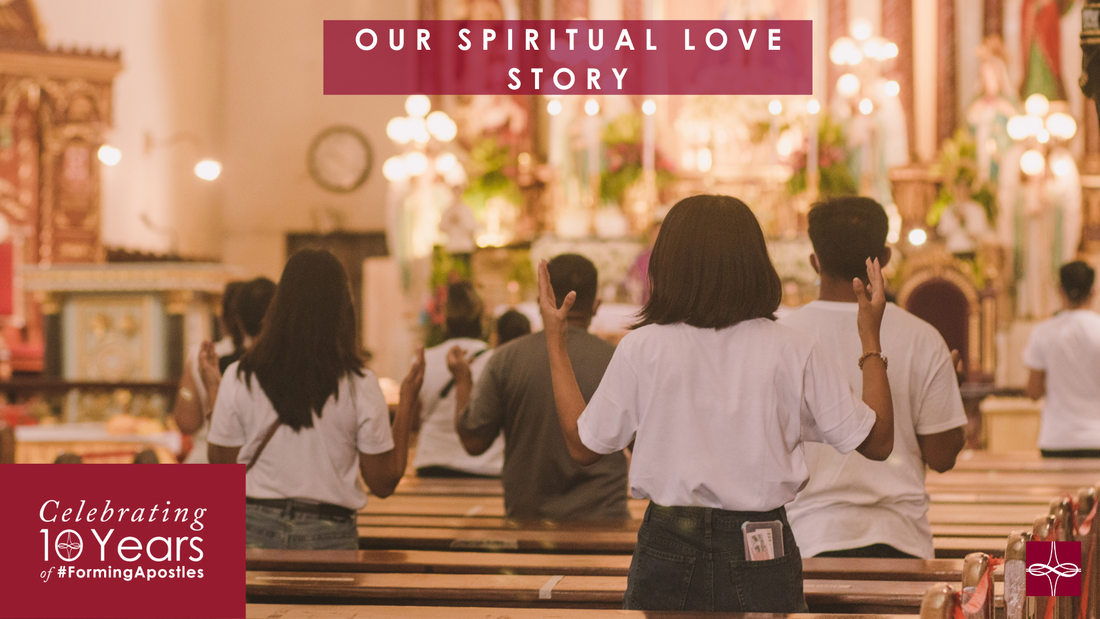

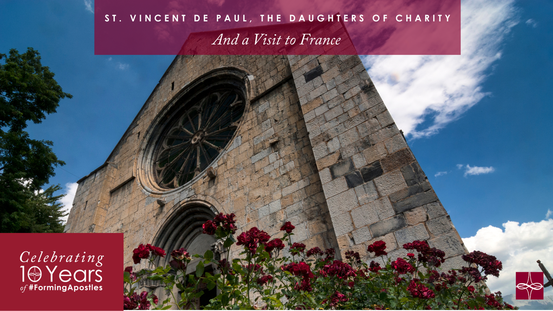
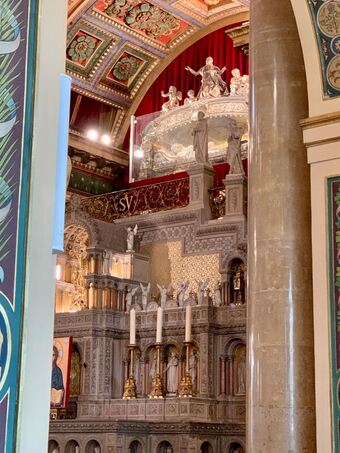
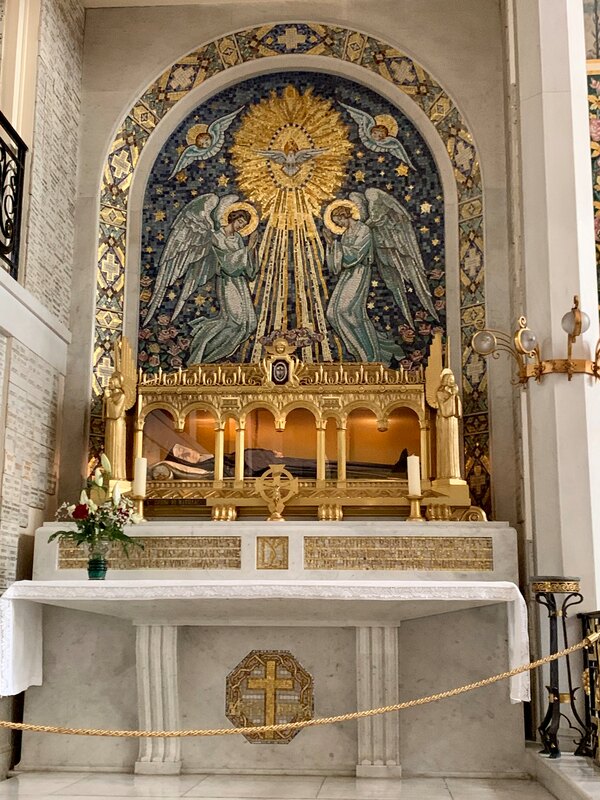

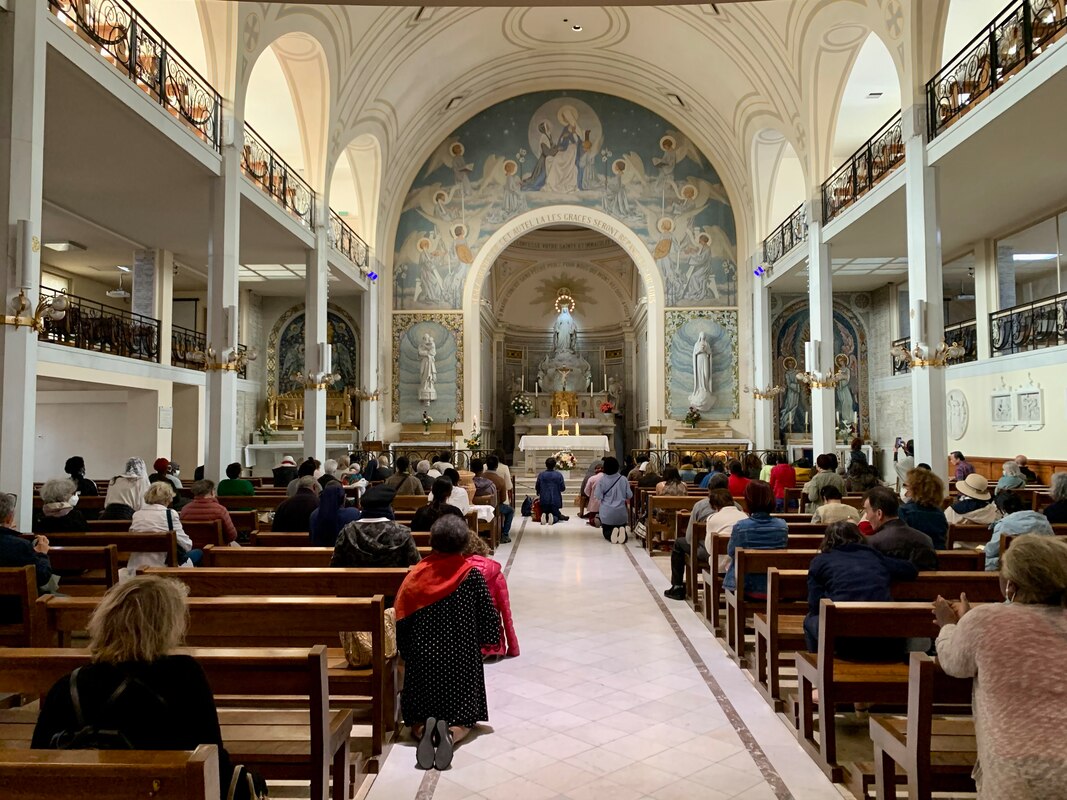

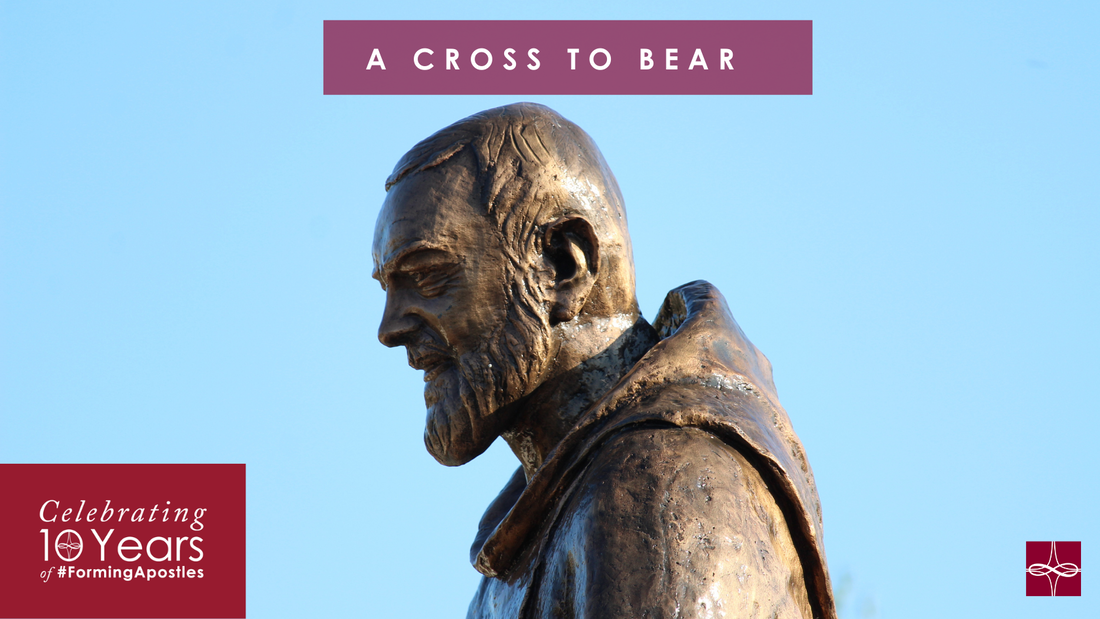

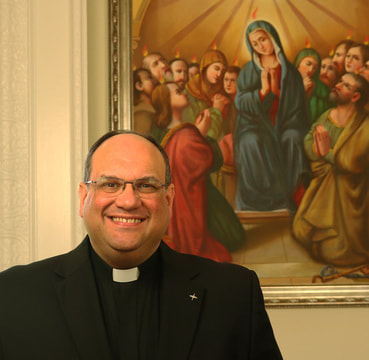


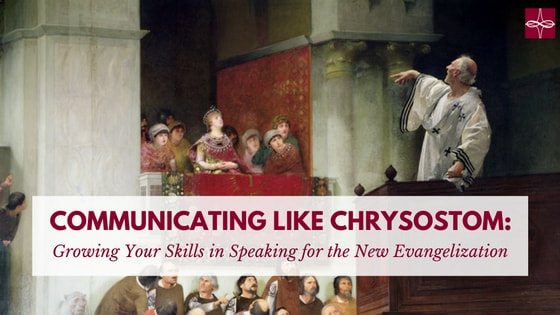
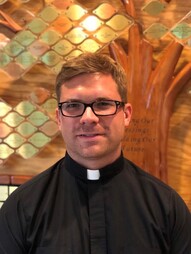
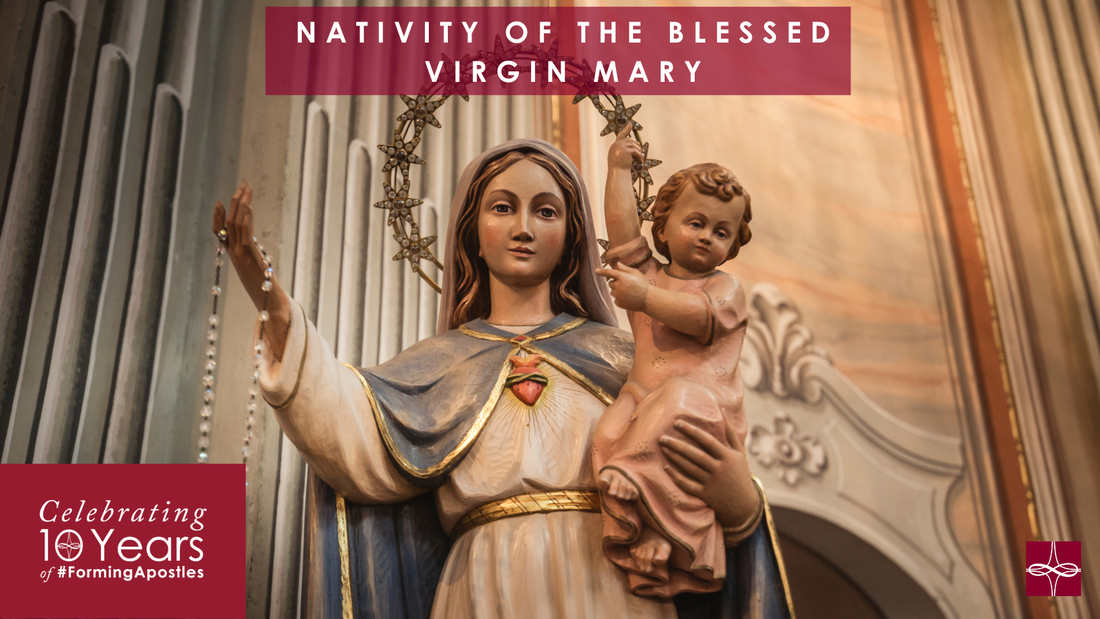
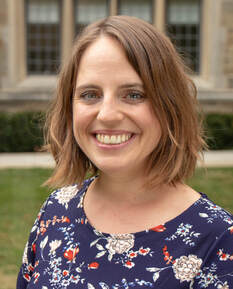
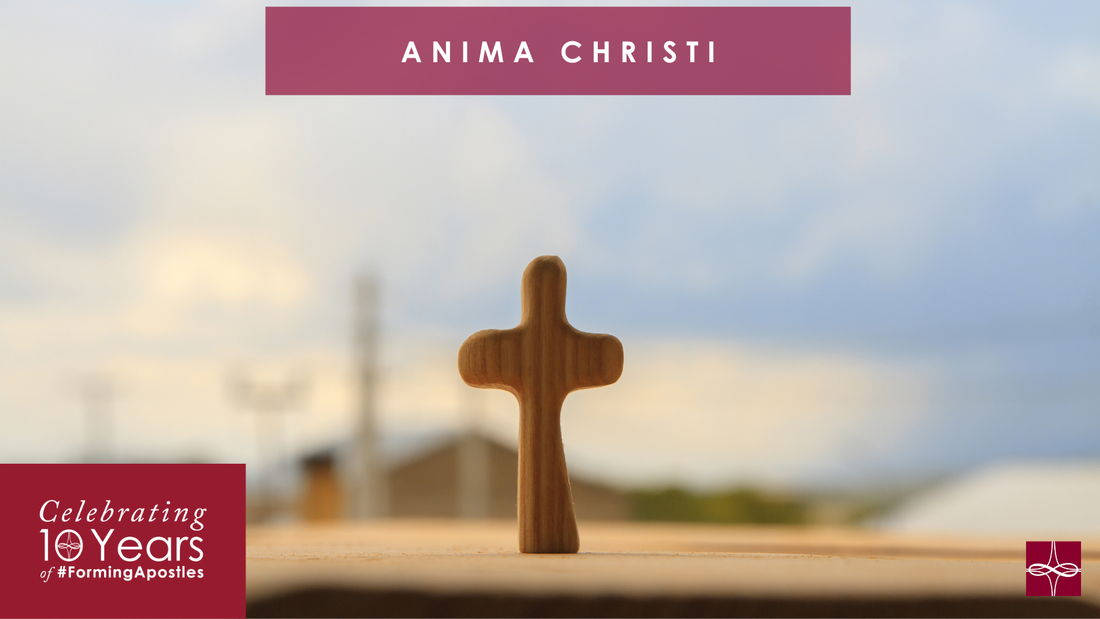
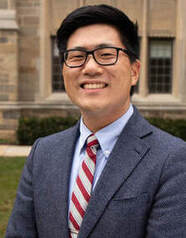
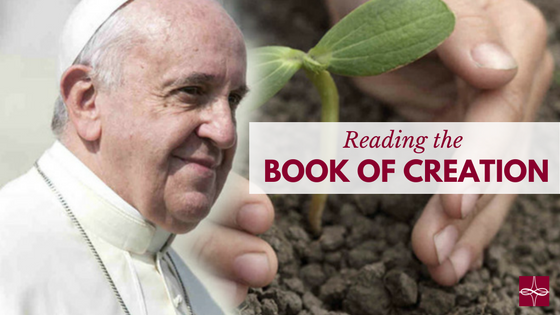

 RSS Feed
RSS Feed